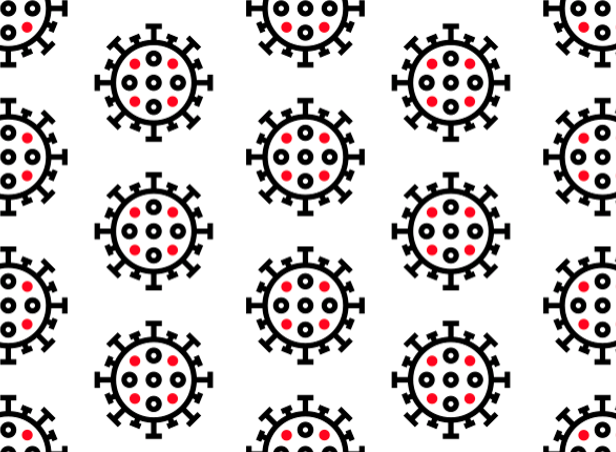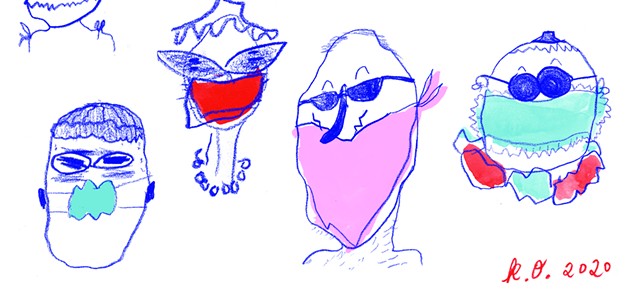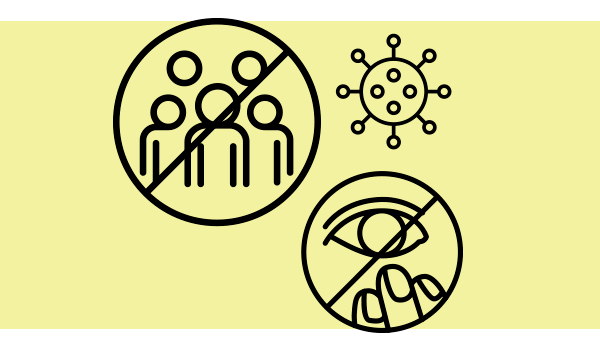Back in March (a lifetime ago) The Coast spoke with Denys Khaperskyy, an assistant professor and researcher at Dalhousie University in the department of microbiology and immunology. Khaperskyy, an expert in virology and influenza viruses, told us the difference between SARS-CoV-2 and Coronavirus Disease and explained the best ways to prevent spread based on what was known at the time.
Since then, over 8,000 Canadians have died from Coronavirus Disease, and over 141,000 have tested positive for the virus. Nova Scotia, along with its Atlantic bubble counterparts, has managed to become one of the safest places in North America, thanks in part to its low population density, shutting down community spread, strict policies to keep it that way, and as Khaperskyy says “I think the fact that people are indeed trying, with rare exceptions, to follow the protocols to social distance."
But what about the rest of it? “The challenge,” says Khaperskyy, “comes from the sheer vastness of the problem and urgency of it.”
In the time since the first outbreaks scientists across the world have been racing against the virus—and misinformation—to learn as much about COVID-19 as possible in real-time.
“There's just basically not enough time to figure things out. They need to be figured out now, and everyone is asking what to do and everyone's looking for a solution—and it’s global,” he says.
But before the solution comes mitigation—making sure we’re doing what we can to manage the problem now, and prepare to manage it in the future. And a key ingredient to mitigation is information. So we asked Khaperskyy to get us up to speed on the latest in the world of COVID-19.
What is it?
"Covid" is how we refer to the current time in which we’re living—but it’s good to remember this name that’s been lent to economic shutdown comes from a respiratory disease (Coronavirus Disease) caused by the SARS-CoV-2 virus.
The virus is highly infectious, and no one on earth (that we know of) was immune before it got here. It mainly presents in the body in the form of a fever or trouble breathing, but it’s very common to have the virus and not exhibit any symptoms, especially in young people. You can have the virus, and not have the disease, but still pass on the virus while it’s in your system.
COVID-19 is pretty run-of-the-mill science-wise, says Khaperskyy. “There's nothing particularly challenging about this particular virus, it's just the scale of the problem. The fact that we've never seen it before, and now we have to deal with a bit urgently.”
How does it spread?
Khaperskyy says for the most part, the virus is spread through respiratory droplets. “The majority of infections occur through close contact, through direct conversation with the person from a close range or a person talking, singing, breathing, coughing, sneezing in direct proximity of someone else.”
Because of that, he says distance is important, and so is time. "The less sort of engaged you are, the shorter the interactions are…the less chance of transmission.”
Khaperskyy says fomites (objects or materials which are likely to carry infection) that are shared like utensils, glasses and water bottles, that come in contact with your mouth (where the virus would spread from in the form of droplets) are high-risk factors for spread too. But other fomites, like door handles, which are less likely to come in contact with your mouth (hopefully no one is licking door handles right now) are less of a concern than they were in the beginning. Now, virologists are mostly seeing direct droplet transmission AKA infected droplets leaving someone’s mouth and making their way into another person’s mouth after floating in the air.
How do we prevent direct droplet transmission?
So glad you asked. The simple answer is: Wear a mask.
“The biggest thing about masks is they work when everyone wears one,” says Khaperskyy. The reason for that, he says, is masks are more effective at protecting uninfected folks from a mask-wearing infected person than the other way around.
“Whenever people say masks are not very effective they’re usually referring to the fact that the people who wear masks are not protected fully,” says Khaperskyy, “But when everyone wears a mask and if one person in the group is infected, the mask on their face is what makes the big difference because it stops the droplets from spreading.”
And decreasing the spread of droplets is the most important part of decreasing the virus spread, says Khaperskyy.
“It's not the virus that masks are stopping,” says Khaperskyy—a mask with small enough holes to stop the virus couldn’t be breathed through—masks are stopping the droplets the virus has hitched a ride on because “viruses do not fly solo, like in midair,” he says.
So what does that mean for viral load?
“Every virus has a certain ability to infect,” says Khaperskyy. But the more virus you get from the get-go, “the more of a head start the virus would probably get in the body,” which can likely result in you getting sicker.
“The more the virus will multiply and the harder it would be for the body to respond to it on time before it makes a lot of damage and it gets into a lot of places,” says Khaperskyy.
Saliva via a juicy kiss, right from the mouth of someone who has SARS-CoV-2 (symptoms or not) will give your body more of the virus, quicker, than if you were to bump into someone on the street and chat from less than two metres apart without a mask.
What does that mean for pre-existing conditions?
Many saw the study results that pointed to COVID-19 deaths being more likely among folks with pre-existing conditions than those without. But there are two stages to COVID-19 that need to be considered here—there’s your ability to contract the virus (to which no one is immune) and have it swimming inside you and be able to pass it along to others—this is you and you’re either symptomatic or asymptomatic.
Then there’s the likelihood that you’ll get sick (AKA get Coronavirus Disease) from the virus, meaning you have more serious symptoms and become unwell. Pre-existing conditions affect your susceptibility to getting sick (make it more likely)—but not your ability to contract and spread the virus.
What role do younger people play then if they’re less likely to have pre-existing conditions?”
Young people are less likely to get sick, says Khaperskyy. "But that doesn't mean that they are less likely to get infected and spread it.” They’re then asymptomatic, meaning they have SARS-CoV-2 in their body, but aren’t showing any symptoms.
This is the reason that in many countries, including Canada, “the infection rates are really increasing right now,” says Khaperskyy. “But the death rates are decreasing and hospitalization rates are not increasing as much as they were, say in May. (Though hospitalization rates are beginning to rise again in other parts of the country.)
So why don’t we just test everyone right now?
First, because we don’t have the capacity. Though NS has ramped up testing since March, testing the whole province at once would be a mammoth task, and it would only tell us who in that very moment has tested positive for the virus—which, warns Khaperskyy, could allow all those who tested negative to feel like they’re off the hook, when in fact they could have contracted the virus on their way home from the test.
How does testing actually work?
There are three kinds of tests, says Khaperskyy:
- There’s a test for genetic material detecting “the actual genome of the virus” in the body. It’s what we’re doing in Nova Scotia right now and is very sensitive and highly accurate. It only works to detect if there’s virus in the body at that moment. Khaperskyy says recent research says saliva can be as good as anything but that the test to the back of the nose was standard from the beginning because “respiratory viruses really like to live in the nasopharyngeal cavity, and that's their place of choice, and that's where you find them.”
- There’s an antigen test, which measures the actual virus particle in the body, which can be detected in saliva or another source. You can have the virus, but not enough of it to be detected in the antigen test, but the theory behind this test is if you don’t have enough virus to be detected, you probably don’t have enough virus to be able to spread it.
- Then there’s the antibody test which can tell you if you’ve had COVID-19 because the stuff your body dispatched into your system to fight the virus, is still hanging around and shows up on the test. “The beauty of that test,” says Khaperskyy, “is that antibodies last a long time” so you can be tested after the virus has left your system or to see if you had the virus but were asymptomatic, “but it's not a great diagnostic test if you trying to stop the spread of the virus,” he says.
Why is quarantine 14 days long?
Khaperskyy says it’s the standard time for your body to be actively infected by COVID-19, and it’s critical that it’s treated like a “live virus” for those 14 days to slow the spread. The length hasn’t changed since the first recommendations came out, the length of which is unique to C19. The normal flu, for example, can be spread from a day before someone shows symptoms to a few days after their symptoms, and herpes can only be spread when there’s an actual flare-up.
What about people who are still sick with symptoms but don’t test positive for the virus?
The Coast also spoke with Halifax resident Jennifer Mont, who tested positive for COVID-19 back in April, and has been experiencing symptoms since then. Khaperskyy says she’s part of the growing group of people "who are sick longer than two weeks, sometimes for many weeks, but who no longer have the virus, ie they're not infectious anymore, but they're still they're sick.”
Mont refers to herself as a “grey area person.” Stuck in the limbo of science and policy that’s working at breakneck speed to address spread and deaths. She’s not dying, but she’s not well, either. "That's what science is about, you find new information, you change what you know,” she says about the slow progress. “That’s just the way science works.” Mont is among thousands of others across Canada who have joined up in a Facebook group "COVID Longhaulers Support Group Canada" to swap stories and symptoms, most just looking for support and someone to believe them.
Why are long-haulers sick for so long?
Right now there’s no perfect answer to what makes one person sick and one person not sick, but Khyaperskyy says one thing they’re noticing is that the prolonged sickness isn’t a result of the virus itself, it’s the prolonged effects of the body’s response to fight off the virus. SARS-CoV-2 comes in, kicks the immune system into high gear to fight it, and that high gear leads to inflammation and collateral damage, which causes a lot of the sickness and death.
So when will we get a vaccine?
People have already started referring to “the day we get a vaccine” as v-Day. But it’s not as simple having no vaccines one day, and the whole world getting jabbed in the arm the next.
Khaperskyy says the fastest a vaccine has ever been brought to market is four years. Even talking about having a vaccine within a year or two years of initial infection was unheard-of until now—when people are operating at "warp speed."To explain what’s happening around the world right now with vaccines, le's use a metaphor. Consider the vaccine like a hit song of the summer (WAP), and a company that manufactures a vaccine like a record label.
Vaccines, like songs, are subject to copyright. So what’s happening right now is hundreds of companies around the world are racing to have the first hit song. And the race for this hit song is so big, that governments are even on board, trying to bolster their country’s labels (like Canadian content requirements on local radio airwaves) with money and support.
It’s a race. Not necessarily for the best song (right now), but for the first song. But, that hit song will be copyrighted. So even when so-called “v-day” comes, that doesn’t mean Canadians will be first in line for the song. It’ll be like those YouTube videos you can follow the link to but can’t watch because “this content is not available in your country.”
And even if a company affiliated with Canada’s government gets the first vaccine, we’ll have to wait until there’s enough produced, it’s been vetted correctly and followed all the legal processes for its release, people who can administer the vaccine are put into place and everything is perfect. They’ll be moving as fast as they can, while not cutting a single corner or skipping a single step. Because a. science and b. public opinion about vaccines is already in such unfounded jeopardy, they can’t afford a misstep, as Khaperskyy says. (Vaccines, like masks, will work best when everybody participates.)
And Khaperskyy says it’s not necessarily a bad thing that there won’t be one single vaccine that the whole world has to wait to use. He uses India as an example. Say the manufacturer there has a vaccine that makes it through all the stages of trials first, they greenlight their operations and start producing the vaccine en masse. But 1.3 billion people live in India. So they’ve got to make all that vaccine and get it to every person before they start thinking about spare to share with Canada or the US.
Meanwhile, scientists will keep working on their own proprietary vaccines because “it doesn't really matter which one works, and maybe many of them work—which would be awesome—because then more people can get them faster,” says Khaperskyy.
Just like a “song of the summer” designation doesn’t guarantee it’s your favourite song, like the flu shot doesn’t guarantee you won’t get the flu, the COVID-19 vaccine won’t guarantee that you won’t get Coronavirus Disease, but once a trial becomes effective for more than half of participants, it’s considered good enough to join the ranks of masks and physical distancing as a valid and crucial tool to help slow and stop the spread of the virus.
When will the pandemic end?
To get to the light at the end of the Covid tunnel there has to “be a limited spread in only certain areas of the globe for at least some period of time, so I don't think it’s coming anytime soon,” says Khaperskyy. Infection numbers would have to be low and symptomatic infections even lower.
“I think it's just going to take time for a lot of people to become immune and transmission chain to be broken and the numbers of infections to become low enough to say that the pandemic is over.”
With masks and distancing measures and a hopeful eventual vaccine, of course, it’ll take time until every person on earth has immunity and things get back to some kind of normal (perhaps a normal that’s better at preventing this kind of thing from happening again?).
What comes after?
“Maybe we should pay a little more attention to global warming and viruses and other things that science says is threatening and we probably should dedicate more resources to understanding it,” he says.
“Everyone says now the economy is priority, you know, we need to feed people. And what do we have now? We have both the health and the economy in really bad shape. So, one goes with the other.”



